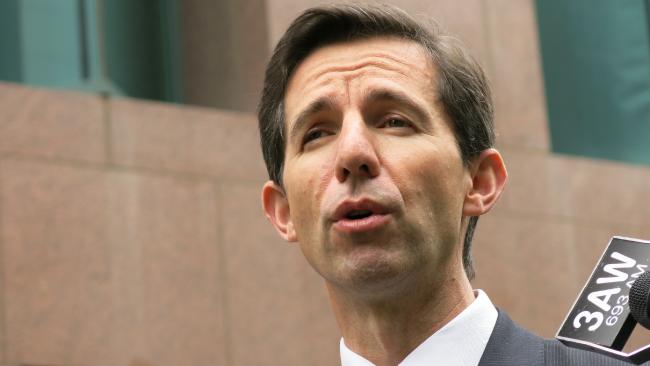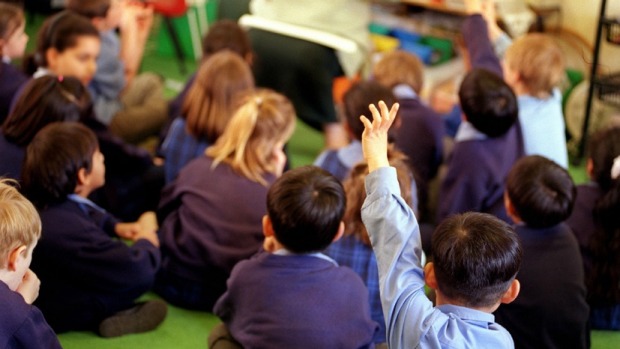Australia/Febrero de 2017/Autores: Tom Bentley/Glenn C. Savage/Fuente: The Conversation
RESUMEN: En esta serie vamos a explorar cómo mejorar las escuelas en Australia, basado en ensayos de un nuevo libro, Educating Australia: Challenges for the Decade Ahead. Algunos de los expertos más prominentes en el sector abordan cuestiones clave, entre ellas, por qué no estamos viendo mucho progreso; Si evaluamos a los niños de la manera más efectiva; Por qué los padres necesitan escuchar lo que la evidencia nos dice, y mucho más. La escuela australiana ha sufrido cambios importantes durante la última década, principalmente a través de las reformas de políticas nacionales acordadas por los gobiernos federal y estatal.
In this series we’ll explore how to improve schools in Australia, based on essays from a new book, Educating Australia: Challenges for the Decade Ahead. Some of the most prominent experts in the sector tackle key questions, including why we are not seeing much progress; whether we are assessing children in the most effective way; why parents need to listen to what the evidence tells us, and much more.
Australian schooling has undergone major changes over the last decade, mainly through national policy reforms agreed by federal and state governments. These include:
- an Australian Curriculum
- standardised national assessments in literacy and numeracy (NAPLAN)
- national reporting on schools through the My School website
- professional standards for teachers and principals
- a universally accessible year of pre-school
- partial implementation of the “Gonski” needs-based funding reforms.
During the same decade, rapid economic, social, technological and cultural changes have generated new pressures and possibilities for education systems – and the people who work in them.
For example, Australia continues to become more ethnically and culturally diverse, and more closely connected to the Asia-Pacific region. It is more active in its use of mobile and digital technology, more urbanised and more unequal in wealth and income.
These broader shifts, and the political responses to them, increasingly place education in a vice. It faces mounting pressure to achieve better outcomes for more people, while expected simultaneously to innovate and solve wider problems of society. And this is all to be done in a context of growing fiscal austerity.
Lots of change, but very little impact
Despite significant reforms over the past decade, there is unfortunately very little sign of positive impacts or outcomes. For example:
- The percentage of Australian students successfully completing Year 12 is not improving.
- State and federal school funding policies are still reproducing a status quo that entrenches sectoral division and elitism.
- New evidence-informed methods, such as clinical and targeted teaching models (which focus on careful monitoring and evaluation of individual student progress and teaching impact), are being taken up very slowly in teacher education degrees and schools.
- The status and efficacy of vocational learning have shown little meaningful improvement.
- NAPLAN and My School have not led to improvements in literacy and numeracy, with 2016 data showing either stagnation or decline.
- The performance of Australian students in international assessments of maths, science and literacy skills has steadily declined.
Replicating a failing system
The national reforms since the mid-2000s were designed to address many of these persistent issues.
Yet somehow, despite hard-fought political battles and reforms, and the daily efforts of system leaders, teachers, parents and students across the nation, we continue to replicate a system in which key indicators of impact and equity are stagnating or going backwards.
The school funding impasse exemplifies this problem.
The policy area is continuously bedevilled by the difficulties of achieving effective collaboration between governments and school sectors in our federal system.
It also remains hamstrung by highly inequitable funding settlements, established over many decades. These continue to entrench privilege in elite schools, while consistently failing to provide “needs-based” funding to schools and young people who need the most support.
As a result, educational opportunities and outcomes become further polarised. Young people from privileged backgrounds are accruing further advantage. Those from disadvantaged backgrounds are increasingly locked out of competitive education and job markets.
The global growth of identity politics, fostering conflict over class, race, gender and migration, puts these trends in stark context.
So what are we doing wrong?
In Educating Australia: Challenges for the Decade Ahead, we tackle this question and seek to create a more innovative and productive interaction between ideas, evidence, policy and practice in education.
The scholars, practitioners and policy thinkers involved in the book examine key issues in education and canvas opportunities for improving outcomes on a wide scale. This includes areas like teaching, assessment, curriculum, funding and system-wide collaboration.
Across all these areas, it is clear that huge value would be created in Australia if the ways of framing and delivering teaching, learning and community engagement were adjusted to reflect new methods and perspectives arising from innovative practice and research.
Yet this is easier said than done. And despite many commentators claiming so, there are no magic-bullet solutions.
Over the past decade, the policy landscape has become riddled with reform “solutions” that subject students, teachers, administrators and policymakers to mounting levels of pressure and stress. The short-term cyclical churn of today’s politics and media clearly exacerbates these problems.
There have, however, been some important and substantive reforms that prove not all political change is superficial. And not all aspects of national reform have failed to generate positive impacts.
For example, the Gonski reforms have channelled powerful resources to some schools. And My School has allowed us to see clearly where inequalities lie and interventions must be targeted.
Policy interventions, however, rarely achieve their objectives in isolation, or in predictable or linear ways, when they encounter complex systems and realities.
That is why we need to rethink the purposes of education as we go, and align these with the workings of curriculum, assessment, regulation and funding, along with the daily efforts of teachers, students and other community members.
Discussions about purposes will not thrive if separated or abstracted from the practices and politics of education: the places and spaces where policies are implemented, where students experience schooling, where professional identities are formed and challenged.
As such, far greater attention and skill is needed to craft and build the institutional capabilities that render goals achievable, ensure fairness, and foster innovation and systemic learning in the public interest.
Practical lessons arising from recent innovations in teacher education, professional learning, curriculum alignment and inter-school collaboration can help here.
We also need to move beyond a fascination with divisions between governments in Australia’s federal system. We must focus instead on harnessing the potential of networks and collaborations across systems.
That is why a coherent reform “narrative” that genuinely reflects evidence about the nature of effective learning and teaching matters so much.
Ultimately, the future success of Australian school-age education hinges on whether powerful ideas can be realised in practice, across tens of thousands of classrooms and communities.
If we want reforms to be effective, their design must be grounded in wide-ranging dialogue about the nature of the problems and evidence about what will help to solve them.
Fuente: http://theconversation.com/educating-australia-why-our-schools-arent-improving-72092














 Users Today : 14
Users Today : 14 Total Users : 35460277
Total Users : 35460277 Views Today : 19
Views Today : 19 Total views : 3418987
Total views : 3418987